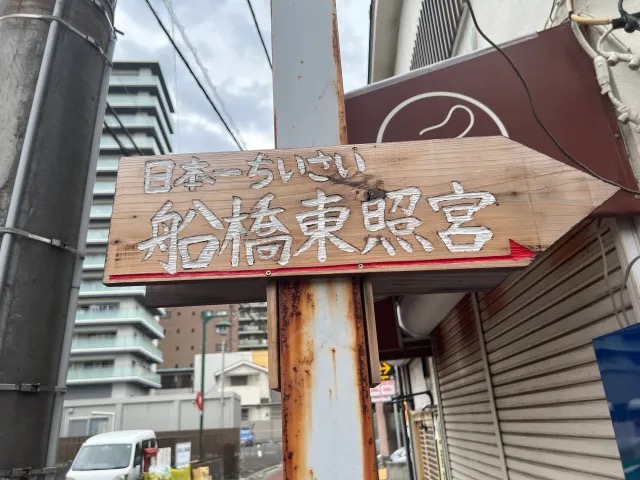
An ancient palace still wields its magic in a residential backstreet hidden from tourists.
Funabashi City in Chiba Prefecture is well known for its convenient access to downtown Tokyo, making it a popular place to live for workers commuting in and out of the capital. However, it’s more than just a metropolitan commuter hub next to Tokyo, with secret tourist sites that fly under the radar, even for locals like our very own Kouhey, who was born and raised in the area, living there for 40 years.
It was only recently that he learned the city was home to Japan’s smallest Toshogu Shrine, located just a quick 10-minute walk from Funabashi Station, so as soon as he heard about it, he headed over there to check it out.
If you’re wondering what a Toshogu Shrine is, don’t worry — there are plenty of Japanese people who don’t know the details either. Toshogu shrines are dedicated to Tokugawa Ieyasu, the first shogun of the Edo shogunate, which ruled Japan from 1603 to 1868. The most famous Toshogu shrine is Nikko Toshogu in Tochigi Prefecture, which is famous for the Three Wise Monkeys.
While the shrine in Nikko is perhaps the grandest of them all, the smallest of them is said to be located in Funabashi, and to get there, you simply walk down Yamaguchi Yokocho from the south exit of JR Funabashi Station. After about five minutes, turn left at Goten Street, and then continue past the Dairen Chinese restaurant.
▼ Walk for about a minute and you’ll see this Times parking lot on your right.
This is where you’ll take a left down a side street with a signpost directing you to “Japan’s Smallest Funabashi Toshogu Shrine“.
▼ Following the sign takes you into a quiet residential street…
▼ …at the end of which you’ll find the tiny Toshogu Shrine!
Compared to the size and grandeur of many Toshogu shrines, this one is miniscule by comparison, and totally changes the image of what these shrines are expected to be like. In fact, it’s almost the same size as the surrounding houses, blending into the landscape instead of standing out.
It still retains a deep sense of dignity and solemnity, though, and Kouhey bowed outside the torii gate before entering the premises.
It was a short walk along the approach path from the first torii gate to the main shrine, as it was only a few metres long.
The second torii gate has the characters “東照宮” (” Toshogu“) engraved upon it, and beyond that is the Tokugawa family crest, which consists of three aoi (a species of mallow) leaves, inside a circle.
On the right-hand side is a red torii gate in front of a shrine dedicated to Inari, a popular deity associated with foxes, rice, and prosperity.
▼ This gate has the characters “御殿稲荷” (“Goten Inari“) engraved on the plaque.
The nearby chozuya water trough, where worshippers wash their hands and mouth, is another unusual sight as you don’t see many of these in a residential environment with houses directly behind it.
This shrine is said to bring blessings for business prosperity and traffic safety, and according to the information board, it’s rich in history, having been the former site of Funabashi Goten Palace, which is said to have been built around 1614.
The informative inscriptions reveal that Tokugawa Ieyasu was fond of hawking and used to build palaces to rest and stay at when on his way to the hunt. As Funabashi was en route to a hunting site in Togane, a palace was built on this site, and Ieyasu stayed here in November 1615. However, the palace fell into disrepair when hawking in Togane fell out of favour by the family, and was abolished in 1671.
The site was then granted to a chief priest sometime between 1684 and 1688, after which time it became farmland, but not before the priest erected a Toshogu Shrine dedicated to Ieyasu where the palace building once stood.
The shrine was rebuilt in 1857, underwent repairs in 1927, and in 1965 it was designated a valuable Cultural Property showing the important connection between Funabashi and Ieyasu.
▼ Who knew so much history lay at the end of this tiny residential street?
It’s amazing to think that such a powerful feudal leader once stayed here, in what is now a humble-looking backstreet. However, it’s not the only residential area that has a tiny Tokugawa connection, because another site, Onarimachi Toshogu in Kounosushi City, Saitama Prefecture, also claims to be Japan’s smallest Toshogu Shrine.
▼ The only thing visible of that site on Google Maps is a couple of flags with “東照宮” printed on them.
While nobody seems intent on actually determining which shrine is smaller than the other, it’s interesting to note that they’re both tucked away in residential backstreets, hidden like treasures reserved for locals…and those who know how to find them.
It just goes to show just how much history is hidden in Japan, even miles away from the big-name tourist attractions. No matter where you are in in the country, cultural gems and samurai tales are waiting to be found wherever you go!
Shrine information
Funabashi Toshogu / 船橋東照宮
Address: Chiba-ken, Funabashi-shi, Honcho 4-29-1
千葉県船橋市本町4-29-1
Website
Photos © SoraNews24
● Want to hear about SoraNews24’s latest articles as soon as they’re published? Follow us on Facebook and Twitter!
[ Read in Japanese ]


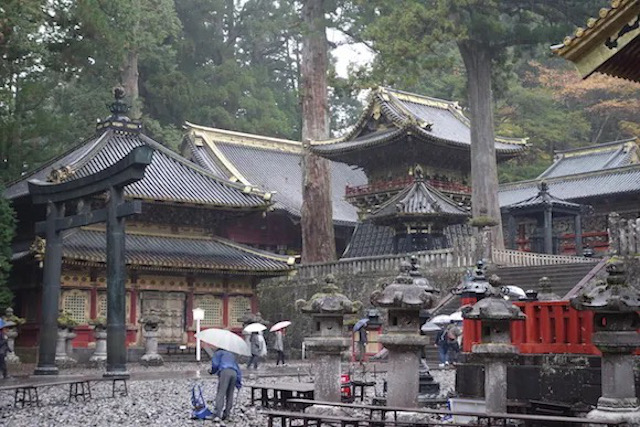
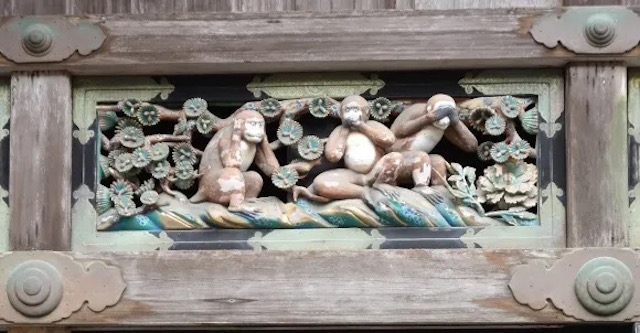
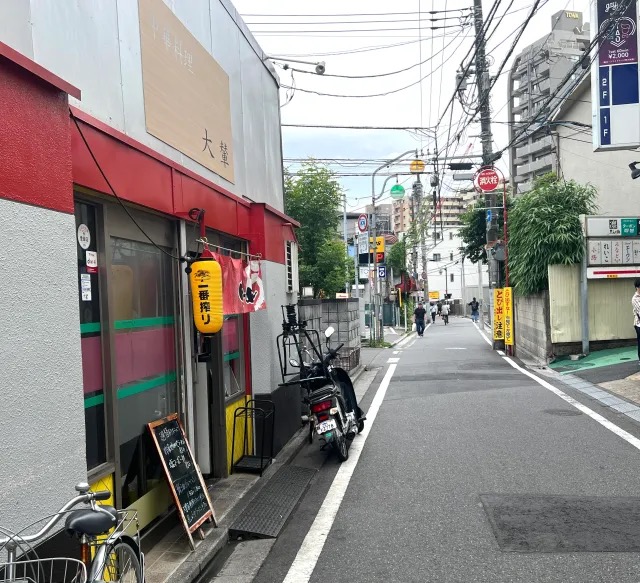
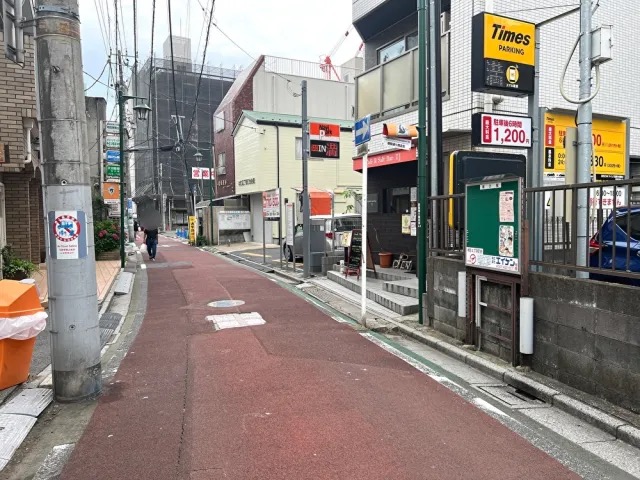
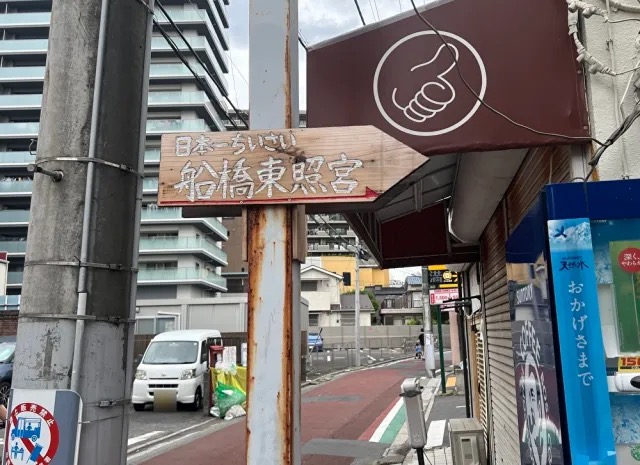
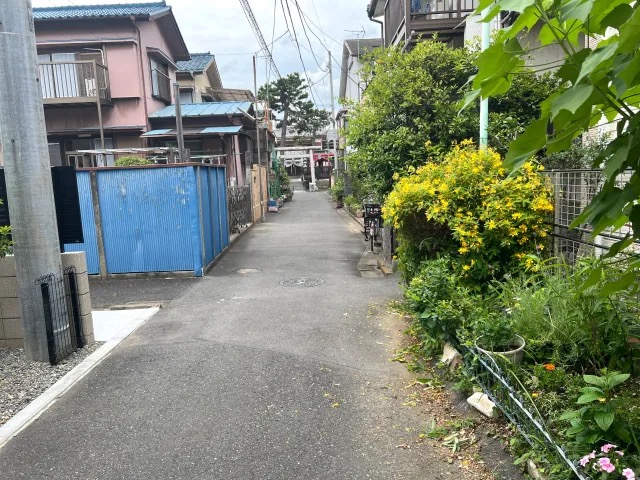
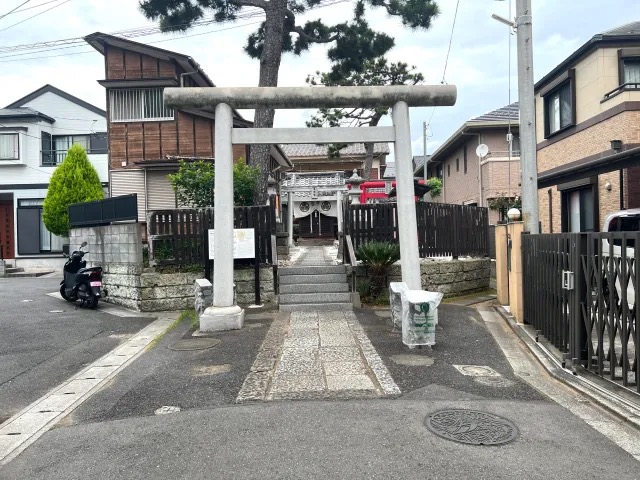
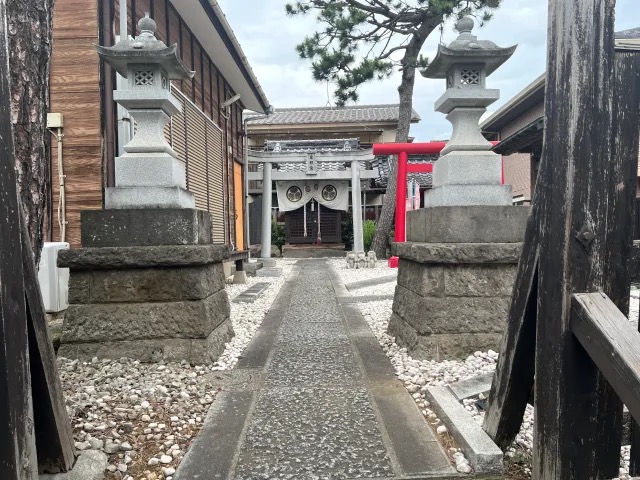
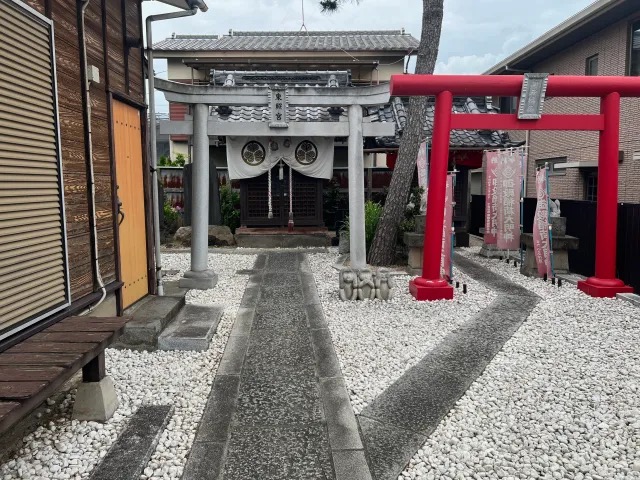
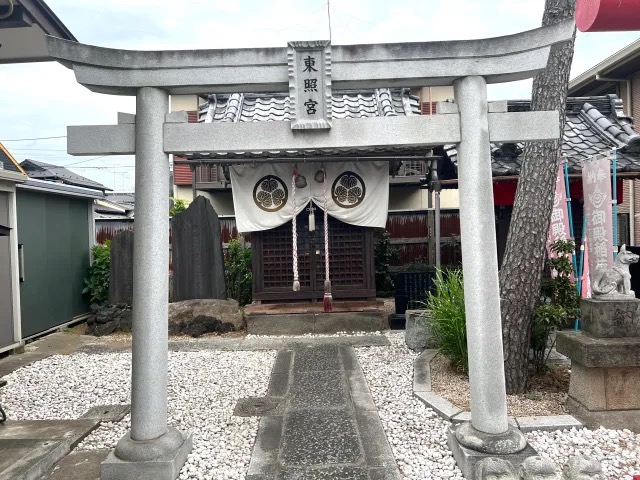
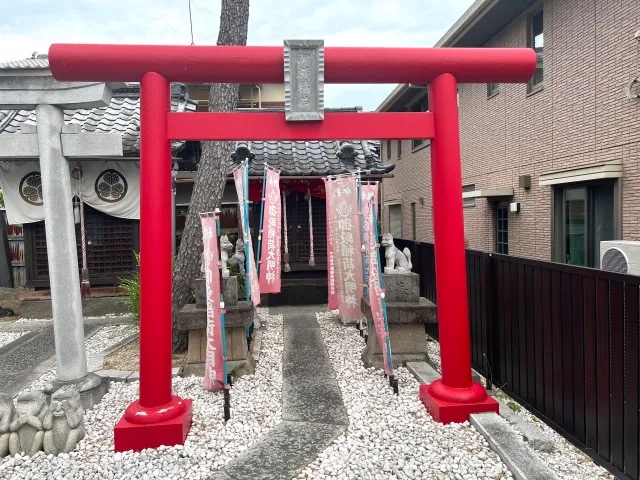
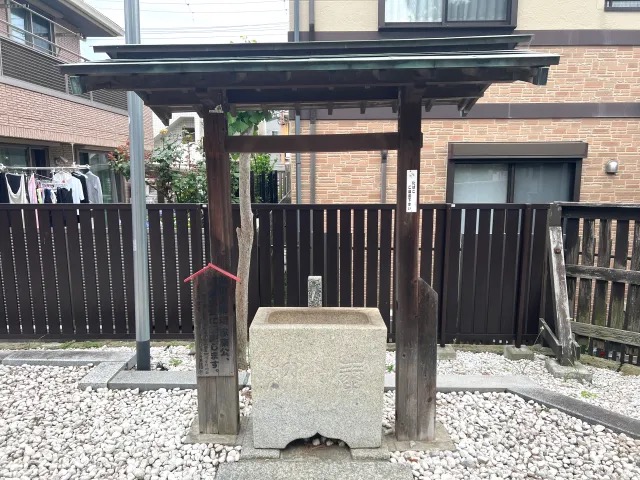
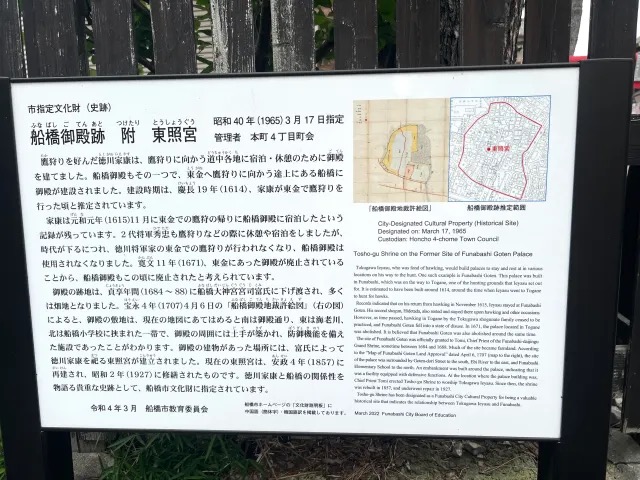
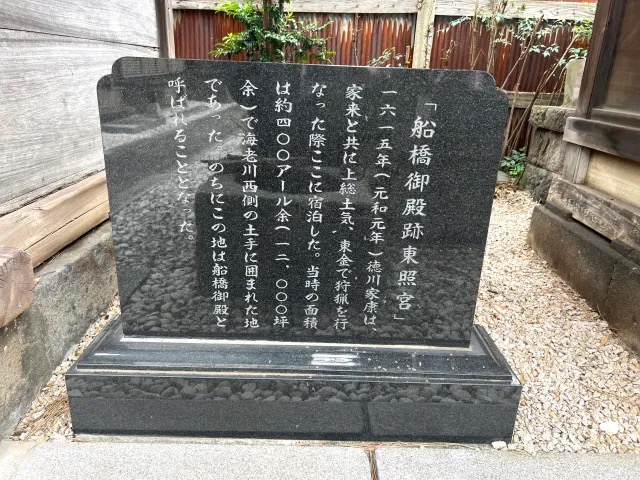
 Visiting Kunozan Toshogu, the shrine where the first lord of Japan’s last shogunate was buried
Visiting Kunozan Toshogu, the shrine where the first lord of Japan’s last shogunate was buried Forbidden area at Japanese mountaintop shrine opens to the public for first time in 400 years
Forbidden area at Japanese mountaintop shrine opens to the public for first time in 400 years “Sleeping Cat” and “Three Wise Monkeys” at Nikko’s Tōshō-gū Shrine removed for restoration work
“Sleeping Cat” and “Three Wise Monkeys” at Nikko’s Tōshō-gū Shrine removed for restoration work Starbucks Japan releases new Frappuccino and latte for Valentine’s Day
Starbucks Japan releases new Frappuccino and latte for Valentine’s Day Starbucks Japan releases new popcorn Frappuccino at one special location
Starbucks Japan releases new popcorn Frappuccino at one special location Pokémon Lego kits are finally on their way!【Photos】
Pokémon Lego kits are finally on their way!【Photos】 Man arrested for violating Japan’s anti-dueling law in downtown Tokyo
Man arrested for violating Japan’s anti-dueling law in downtown Tokyo Giant hotel rooms in Osaka reflect the new non-niche face of travel in Japan.
Giant hotel rooms in Osaka reflect the new non-niche face of travel in Japan. Village Vanguard tries to tickle us pink with a Pink Lucky Bag
Village Vanguard tries to tickle us pink with a Pink Lucky Bag Best practices for celebrating Coming of Age Day for those turning 18, 20, or both in Japan
Best practices for celebrating Coming of Age Day for those turning 18, 20, or both in Japan We ate sushi made from Japan’s most expensive tuna ever【Taste test】
We ate sushi made from Japan’s most expensive tuna ever【Taste test】 Researchers in Japan give mouse glowing sperm
Researchers in Japan give mouse glowing sperm Ramen restaurant’s English menu prices are nearly double its Japanese ones, denies discriminating
Ramen restaurant’s English menu prices are nearly double its Japanese ones, denies discriminating 10 times to avoid traveling in Japan in 2026
10 times to avoid traveling in Japan in 2026 Our 52-year-old pole dancing reporter shares his tips for achieving your New Year’s exercise goal
Our 52-year-old pole dancing reporter shares his tips for achieving your New Year’s exercise goal Japanese beef bowl chain Sukiya’s 2026 Smile Box lucky bag basically pays for itself
Japanese beef bowl chain Sukiya’s 2026 Smile Box lucky bag basically pays for itself Top Japanese cosplayer Enako returns to Comiket after 6 years, creates mayhem with admirers
Top Japanese cosplayer Enako returns to Comiket after 6 years, creates mayhem with admirers Umamusume anime girl plushie recalled for having parts she absolutely should not have【Pics】
Umamusume anime girl plushie recalled for having parts she absolutely should not have【Pics】 Princess Mononoke magnets return just in time to treat yourself to awesome anime decorations
Princess Mononoke magnets return just in time to treat yourself to awesome anime decorations Starbucks Japan ready to get Year of the Horse started with adorable drinkware and plushies【Pics】
Starbucks Japan ready to get Year of the Horse started with adorable drinkware and plushies【Pics】 7-Eleven Japan starts new temporary luggage storage service in over 300 branches
7-Eleven Japan starts new temporary luggage storage service in over 300 branches Disillusionment at Tsukiji’s tourist-target prices led us to a great ramen restaurant in Tokyo
Disillusionment at Tsukiji’s tourist-target prices led us to a great ramen restaurant in Tokyo Starbucks teams up with 166-year-old Kyoto doll maker for Year of the Horse decorations【Photos】
Starbucks teams up with 166-year-old Kyoto doll maker for Year of the Horse decorations【Photos】 Tokyo’s Tsukiji sushi neighborhood asks tour groups to stay away for the rest of the month
Tokyo’s Tsukiji sushi neighborhood asks tour groups to stay away for the rest of the month Japan may add Japanese language proficiency, lifestyle classes to permanent foreign resident requirements
Japan may add Japanese language proficiency, lifestyle classes to permanent foreign resident requirements Lacquerware supplier to emperor of Japan and Pokémon team up for new tableware
Lacquerware supplier to emperor of Japan and Pokémon team up for new tableware Survey asks foreign tourists what bothered them in Japan, more than half gave same answer
Survey asks foreign tourists what bothered them in Japan, more than half gave same answer Japan’s human washing machines will go on sale to general public, demos to be held in Tokyo
Japan’s human washing machines will go on sale to general public, demos to be held in Tokyo We deeply regret going into this tunnel on our walk in the mountains of Japan
We deeply regret going into this tunnel on our walk in the mountains of Japan Studio Ghibli releases Kodama forest spirits from Princess Mononoke to light up your home
Studio Ghibli releases Kodama forest spirits from Princess Mononoke to light up your home Major Japanese hotel chain says reservations via overseas booking sites may not be valid
Major Japanese hotel chain says reservations via overseas booking sites may not be valid Put sesame oil in your coffee? Japanese maker says it’s the best way to start your day【Taste test】
Put sesame oil in your coffee? Japanese maker says it’s the best way to start your day【Taste test】 No more using real katana for tourism activities, Japan’s National Police Agency says
No more using real katana for tourism activities, Japan’s National Police Agency says Starbucks Japan reveals new sakura drinkware collection, inspired by evening cherry blossoms
Starbucks Japan reveals new sakura drinkware collection, inspired by evening cherry blossoms Updated cherry blossom forecast shows extra-long sakura season for Japan this year
Updated cherry blossom forecast shows extra-long sakura season for Japan this year Human washing machine pods coming to Japanese hotels【Photos】
Human washing machine pods coming to Japanese hotels【Photos】
Leave a Reply